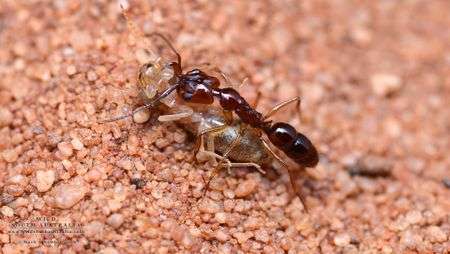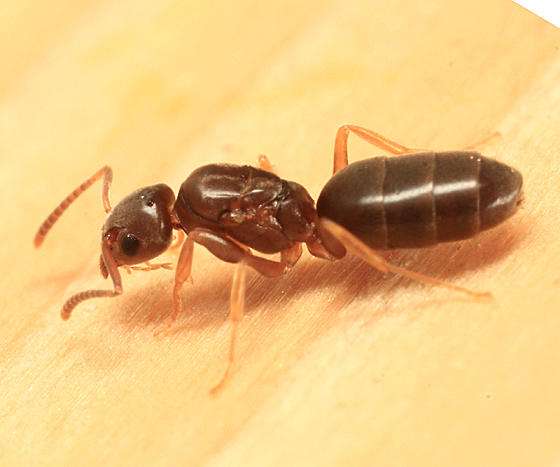
More than 100 different species can be found throughout the tropics and subtropics of the entire planet.
Habitat
Anochetus build tiny nests, typically with less than 100 workers, in rotting wood, under logs, in the ground, and in termite nests. Only a few species live in trees. When compared to workers of the closely related genus Odontomachus, they are less usually encountered in the open and frequently forage in leaf litter.
Identification
The exterior surface of the head is complex when viewed from the front, with thin parts above and below bulging convexities that house the eyes. The mandibles are often only equipped with 2 or 3 big teeth towards the tips, are long and straight, and are inserted in the middle of the front border of the skull (although they sometimes have small teeth along the inner margins which are much smaller than the teeth at the tips). There are no dark streaks and the top of the head is uniformly coloured. Even though the upper front of the head occasionally has a weak, ill-defined center groove, it is typically smooth.
Except for Odontomachus, these ants may be distinguished from all others by their distinctive head and mandible shapes. The markings on the rear of the head make it simple to identify between Odontomachus and Anochetus. Odontomachus possesses black, inverted V-shaped apophyseal lines that merge to form a definite, occasionally shallow groove or ridge on top back of head when head is viewed from rear near the neck of pronotum. The V-shaped apophyseal lines are not present in Anochetus. But in Anochetus, the nuchal carinae form an unbroken, inverted U-shaped ridge in the same area of the rear of the head.

Diet
They hunt on small invertebrates, and certain species are known to specialize in termites. They use their sting and trap-like jaws to grab and subdue prey.
Distribution
This genus is present on all continents, with the exception of Antarctica and Europe, and is native to both the Old and New Worlds. Anochetus ghilianii, the sole species that has been discovered in Europe, may not be endemic to the continent (Province of Cadiz and Gibraltar). A. ghilianii, however, is indigenous to Morocco.
Table





